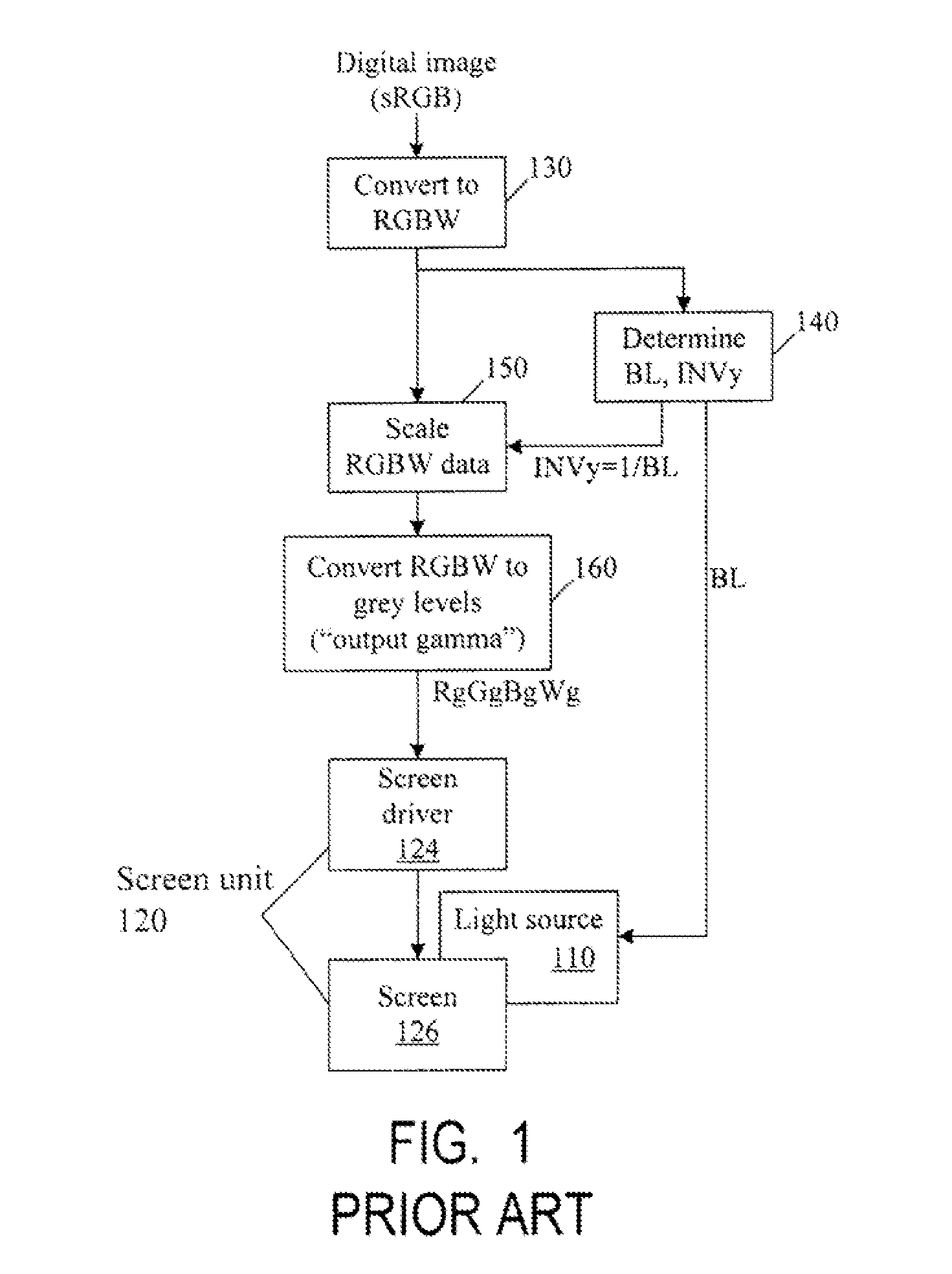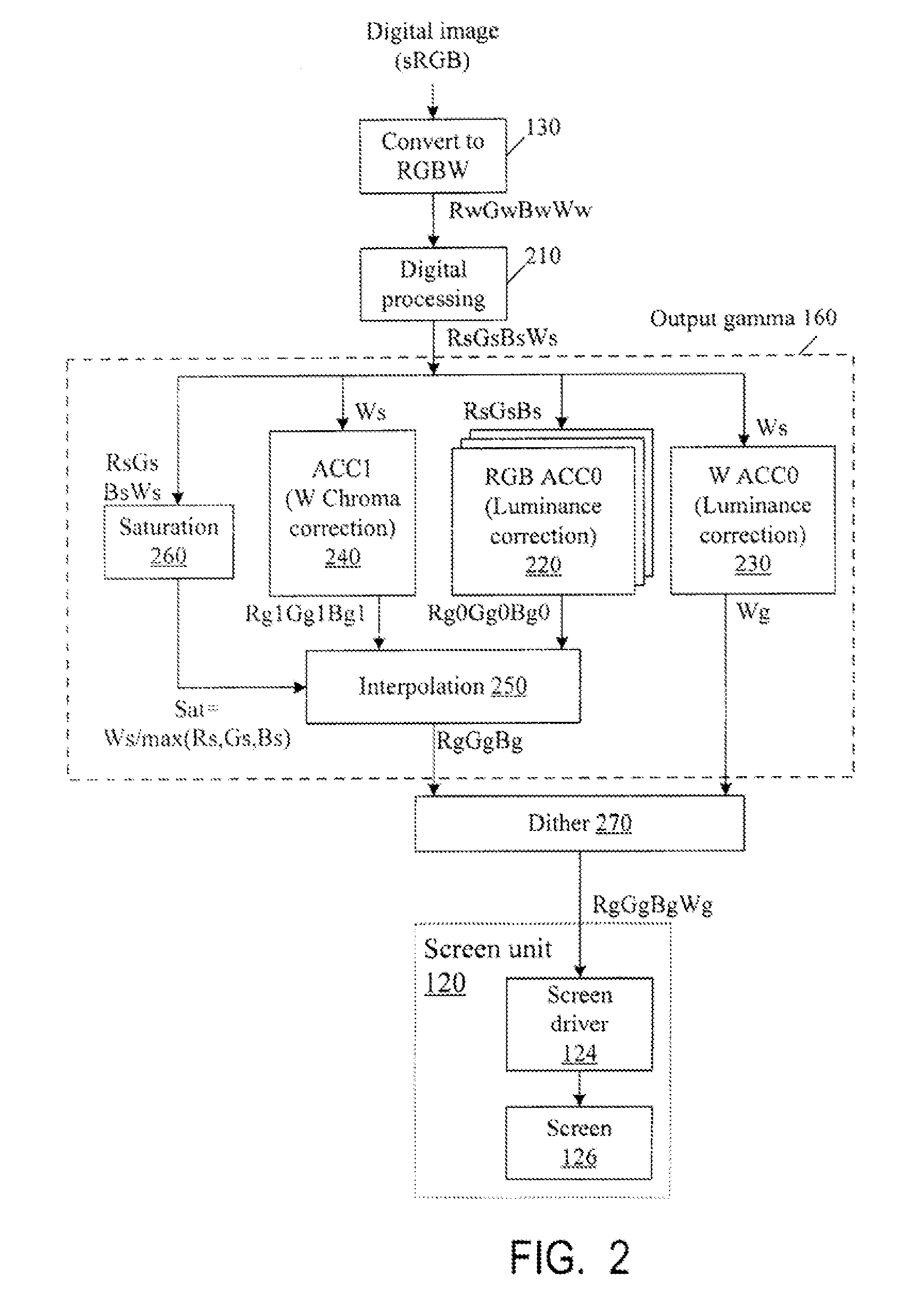Color correction to compensate for displays' luminance and chrominance transfer characteristics
a technology of luminance and chrominance transfer, applied in the field of image processing, can solve the problems of chrominance deviation (, hue deviation) within each channel, large table size, etc., and achieve the effects of increasing the maximum image brightness available, reducing table size, and increasing brightness
- Summary
- Abstract
- Description
- Claims
- Application Information
AI Technical Summary
Benefits of technology
Problems solved by technology
Method used
Image
Examples
Embodiment Construction
[0023]The embodiments described in this section illustrate but do not limit the invention. The invention is defined by the appended claims.
[0024]Some embodiments of the present invention modify the display of FIG. 1 as follows. The color correction is incorporated into the output gamma block 160. The display may or may not use DBLC, and in particular the DBLC block 140 and scaler 150 may or may not be present. Light source 110 may or may not be present, and in particular the display may be non-LCD type. The display may use LUTs or computational circuitry, or combination of the two. For example, some values can be stored in LUTs, white other values can be interpolated from the LUT values. For ease of description, the examples described below use tables, but these examples are not limiting.
[0025]FIG. 2 illustrates a block diagram of a display with such tables 220, 230, 240 in output gamma block 160.
[0026]The color correction technique illustrated in FIG. 2 will be called a “vector met...
PUM
 Login to View More
Login to View More Abstract
Description
Claims
Application Information
 Login to View More
Login to View More - R&D
- Intellectual Property
- Life Sciences
- Materials
- Tech Scout
- Unparalleled Data Quality
- Higher Quality Content
- 60% Fewer Hallucinations
Browse by: Latest US Patents, China's latest patents, Technical Efficacy Thesaurus, Application Domain, Technology Topic, Popular Technical Reports.
© 2025 PatSnap. All rights reserved.Legal|Privacy policy|Modern Slavery Act Transparency Statement|Sitemap|About US| Contact US: help@patsnap.com



